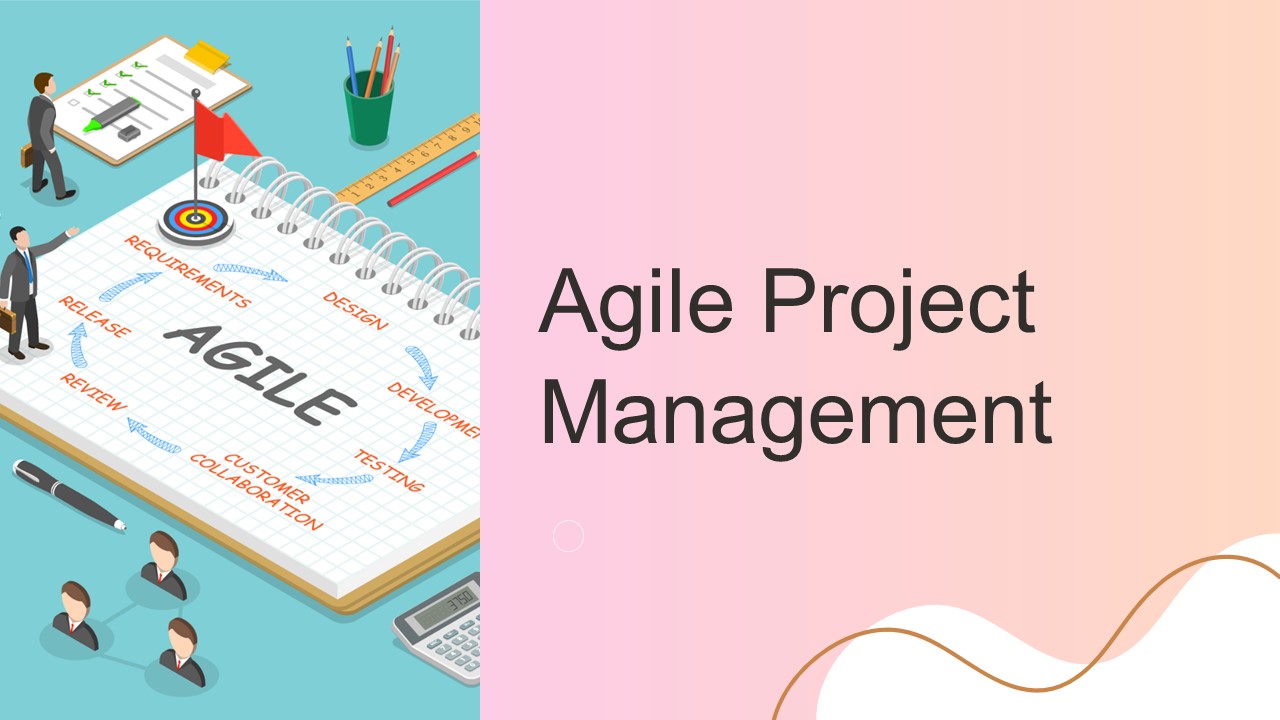Agile Project Management - PowerPoint PPT Presentation
Title:
Agile Project Management
Description:
Agile project management is an iterative and flexible approach to project execution, emphasizing collaboration, adaptability, and continuous improvement. It allows for changing requirements and encourages regular feedback from stakeholders, making it particularly suitable for dynamic and fast-paced environments, such as software development and product innovation. View for information: – PowerPoint PPT presentation
Number of Views:4
Title: Agile Project Management
1
Agile Project Management
2
Overview
This presentation will provide an overview of
Agile project management, including the Agile
manifesto and principles, Scrum and Kanban
frameworks, project planning and estimation,
tracking and reporting, as well as the benefits
and challenges. We will also discuss
certification and conclude with key takeaways.
3
What is Agile Methodology?
Agile is an iterative approach to project
management that focuses on flexibility and
adaptability. It emphasizes collaboration,
customer satisfaction, and delivering incremental
value. Agile methodologies include Scrum, Kanban,
Lean, and XP.
4
Agile Manifesto and Principles
The Agile manifesto values individuals and
interactions, working software, customer
collaboration, and responding to change. Its
principles emphasize customer satisfaction,
continuous delivery, and the importance of
self-organizing teams.
5
Scrum Framework
Scrum is a popular Agile framework that uses
short iterations called sprints to deliver value.
It includes roles like the Scrum Master, Product
Owner, and Development Team, as well as
ceremonies like daily stand-ups, sprint planning,
reviews, and retrospectives.
6
Kanban Framework
Kanban is an Agile framework that aims to
visualize and optimize workflow. It utilizes a
Kanban board with columns representing different
stages of work. Tasks are moved across the board,
providing transparency and enabling process
improvement.
7
Agile Project Planning and Estimation
User Story Mapping
Create a visual representation of user stories to
prioritize and plan project activities.
Relative Estimation
Assign story points or t-shirt sizes to estimate
the effort required for each user story.
Release Planning
Define the scope, prioritize features, and
determine the release schedule for the project.
8
Agile Project Tracking and Reporting
VISUAL DASHBOARDS
DATA-DRIVEN INSIGHTS
COLLABORATION TOOLS
Use visual representations to track project
progress, such as burn-down or burn-up charts.
Utilize project management tools to foster
collaboration, communication, and transparency
within the Agile team.
Analyze data to gain insights into team
performance and identify areas for improvement.
9
Benefits and Challenges of Agile Project
Management
- Improved customer satisfaction through early and
frequent delivery - Flexibility to adapt to changing requirements
- Enhanced collaboration and communication among
team members
- Benefits
- Managing stakeholder expectations
- Ensuring team members have the necessary skills
and training - Adapting to organizational culture
- Challenges
10
Certification
Various Agile certifications, such as Certified
ScrumMaster (CSM), Professional Scrum Master
(PSM), and Kanban Management Professional (KMP),
can enhance your knowledge and credibility in
Agile project management. Certification courses
offer in-depth training and practical experience.
11
Conclusion
Agile project management provides a flexible and
iterative approach to delivering value and
maximizing customer satisfaction. Understanding
Agile methodologies, frameworks, and best
practices is crucial for successful project
management in fast-paced and ever-changing
environments.
12
8287142095































